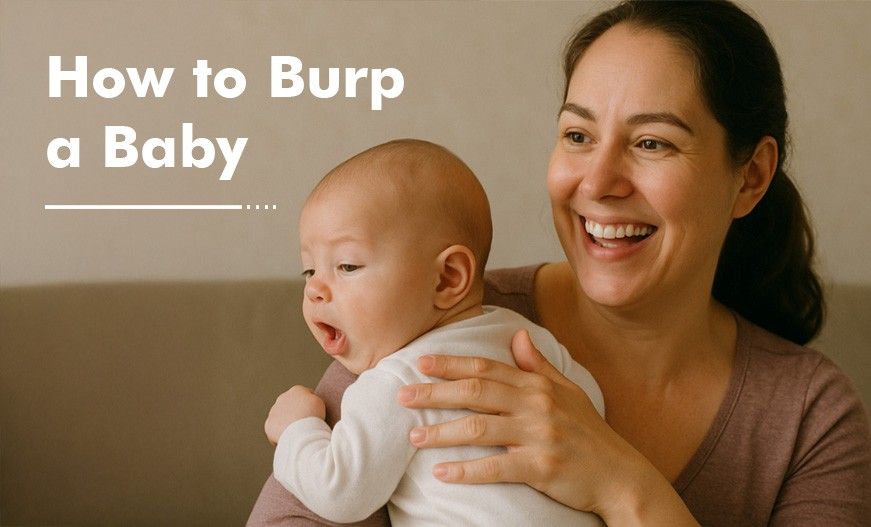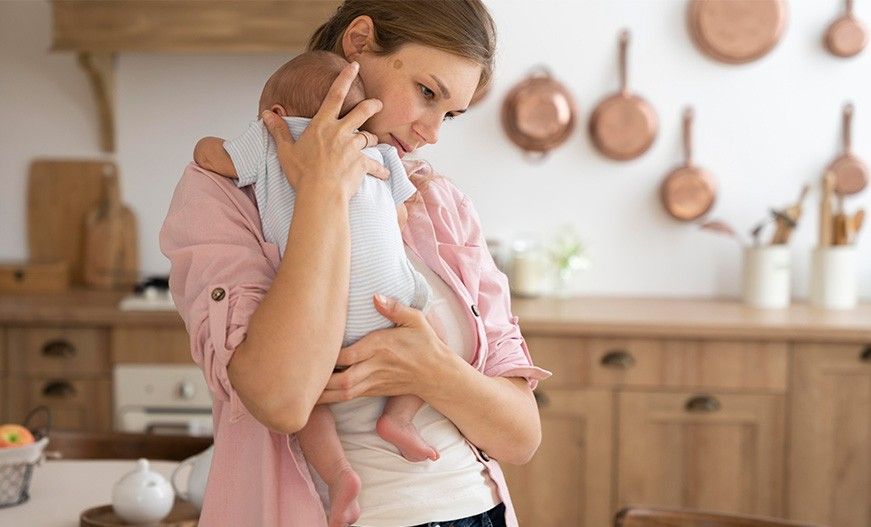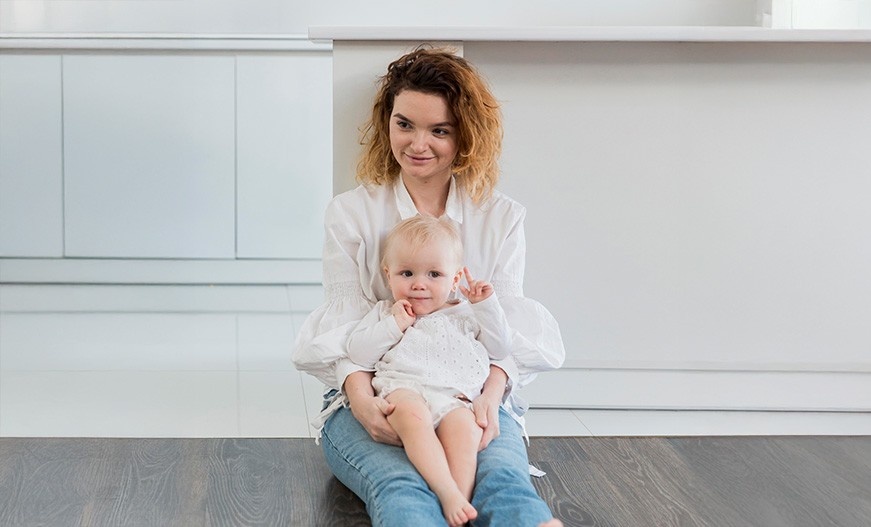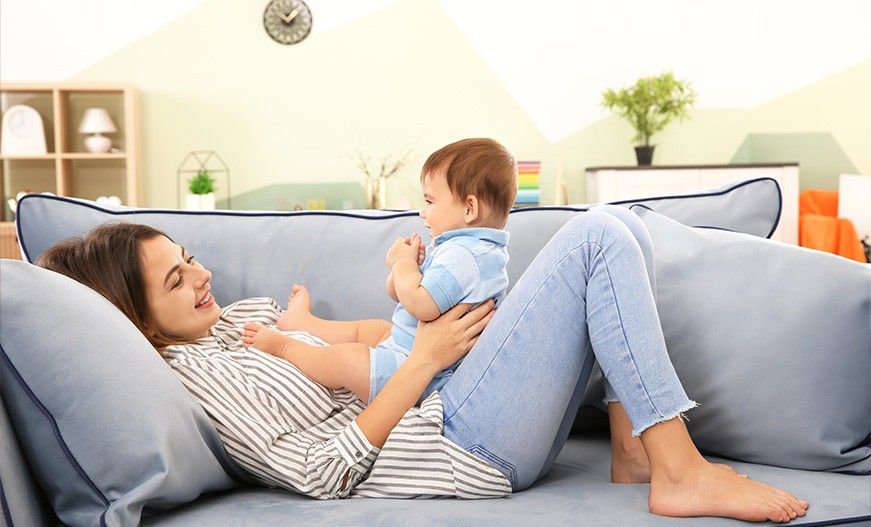Currently Empty: ₹0.00
How To Burp A Baby

Written By: Pinky Kharata
Published By: Satya Narayan Pandey
Burping is crucial for keeping babies comfortable after feeding. Since newborns have immature digestive systems, they often struggle to release trapped air on their own. Proper burping prevents stomach pressure and makes your baby comfortable. It also helps to reduce fussiness during feeding sessions. Let’s take a look at the best way to burp your baby and avoid unnecessary gassiness.
Why Is Baby Burping Important?
Babies usually swallow a bit of air while feeding on milk. Air trapped like this can lead to painful discomfort, fussiness, and even colic. Burping is a way to facilitate the digestive process or release built-up gas. There are various burping methods, and not every baby reacts well to all of them. Some babies burp right away; others take their time. If your baby doesn’t burp immediately, don’t fret. Experiment with a different angle, or wait a couple minutes. The secret is to be gentle and patient.
Best Baby Burping Positions
Effective baby burping positions help prevent gas buildup and discomfort after feeding. Holding your baby in the right posture encourages trapped air to escape. It makes them feel at ease and reduces fussiness.
1. Over Your Shoulder
This is one of the most common burping techniques. Hold your baby upright against your shoulder, supporting their head and neck with one hand. Gently pat or rub their back in circular motions to release the trapped air. This position uses gravity to help move the air bubbles up.

It works best for babies who like to be held upright and offers comfort as they rest against your body. If your baby doesn’t burp after a few minutes, try walking around while patting their back. Keep a burp cloth handy to catch any spit-up. This position is especially helpful for newborns who need extra head support.
2. Sitting On Your Lap
Sit your baby on your lap, facing sideways. Support their chin and chest with one hand while keeping their back straight. Use your other hand to gently pat or rub their back in circular motions. This position helps control the baby’s posture, ensuring their airways remain open. It is great for babies who have good head control and need gentle pressure on their tummy to help release gas.

Make sure to be gentle while supporting their chin, avoiding pressure on the throat. Some babies may take longer to burp in this position, so be patient. Keep a burp cloth handy for any spit-up. If needed, slightly tilt their body forward while burping.
3. Lying Across Your Lap
Place your baby tummy-down across your lap, with their head slightly elevated. Support their head and ensure it’s higher than their chest. Gently pat their back in rhythmic motions to help release gas. This position puts mild pressure on the baby’s stomach, which can help push out trapped air. It’s a good option for babies who don’t burp easily in an upright position.

Some babies find this position soothing as it provides a sense of security. Ensure your baby is comfortable and not too full before trying this method. If your baby seems unsettled, try gently rocking them while burping. This position can also be useful for relieving mild tummy discomfort.
What To Do If A Baby Doesn’t Burp?
If your baby doesn’t burp after a few minutes, don’t worry. Some babies swallow less air and may not need to burp as often. Try changing positions, gently rubbing their back, or holding them upright for 10-15 minutes. A tummy massage or bicycle leg movements can help relieve trapped gas. Feeding in an upright position and using anti-colic bottles may also reduce air intake. If fussiness continues, consult a pediatrician. Be patient, every baby responds differently to burping techniques.
Tips For Preventing Excess Gas In Babies

- Feed your baby in an upright position to reduce air intake.
- Ensure a good latch while breastfeeding to prevent air swallowing.
- Use anti-colic bottles while formula feeding to minimize gas buildup.
- Take burping breaks during feedings, especially if your baby is bottle-fed.
- Avoid overfeeding, as an overly full stomach can trap gas.
- Give your baby tummy time during the day to help release trapped gas.
- Try gentle tummy massages and leg exercises to ease digestion.
Conclusion
Mastering how to burp a baby ensures a happy and comfortable feeding experience. The right burping techniques can help ease digestion and prevent gas buildup. Every baby responds differently, so patience is key. Little Ginnie values baby care and helps parents find gentle, effective ways to keep their baby comfortable and happy.







